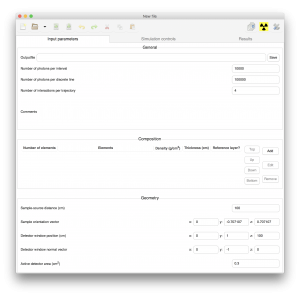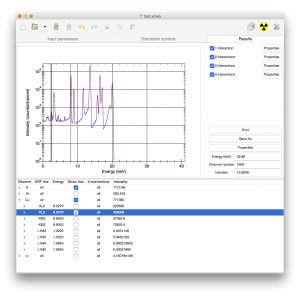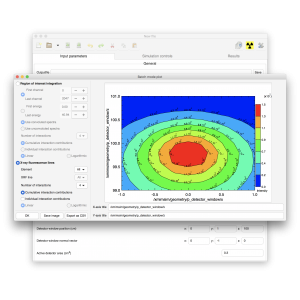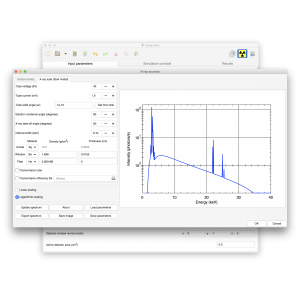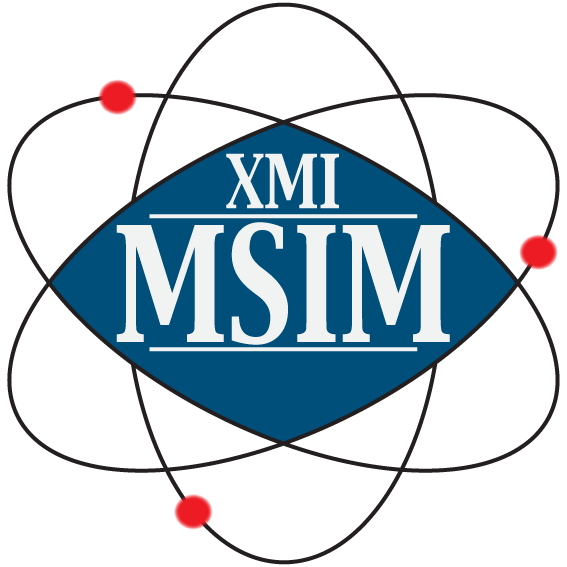 XMI-MSIM
XMI-MSIM
XMI-MSIM is an open source tool designed for predicting the spectral response of energy-dispersive X-ray fluorescence spectrometers using Monte Carlo simulations. It comes with a fully functional graphical user interface in order to make it as user friendly as possible. Considerable effort has been taken to ensure easy installation on all major platforms.
A manuscript has been published in Spectrochimica Acta Part B that covers the algorithms that power XMI-MSIM. Please include a reference to this publication in your own work if you decide to use XMI-MSIM for academic purposes.
A second manuscript was published that covers our XMI-MSIM based quantification plug-in for PyMca.
XMI-MSIM is released under the terms of the GPLv3.
| Website | https://github.com/tschoonj/xmimsim |
| Licenses | GNU General Public License 3.0 |
| Categories | XRF Monte Carlo GUI |
| Software Requirements | * fortran 2003 compiler (gfortran >= 4.4, Intel Fortran are known to work) * C compiler with OpenMP support (gcc and clang). The native Mac OS X version requires that the compiler supports Objective-C as well. When compiling the GUI with GTKMM3 support a C++ compiler becomes an additional requirement. * HDF5 * libxml2 * libxslt * Fortran GSL bindings (FGSL) or easyRNG * xraylib 3.3.0+ (including Fortran bindings) * glib2 * GTK2 (2.24.0+) + GTK-EXTRA (3.1.0+) or GTKMM3 + Gtkmm-PLplot for the graphical user interface (optional though highly recommended) * optional for the GUI: curl, json-glib, libsoup and libnotify (Linux only) * MPI (OpenMPI or Intel MPI): optional. Recommended for those that want to perform brute-force simulations with a very high number of simulated photons * The native Mac OS X build additionally requires gtk-mac-integration |
| Hardware Requirements | XMI-MSIM can be run on desktop computers as well as laptops. If compiled with MPI support, it can also be deployed on clusters. | Platforms | Mac OS Linux Windows |
| Languages | C C++ Fortran Objective-C |
| Input Formats | XML |
| Output Formats | XML CSV SPE |
| Contact email | Tom.Schoonjans@gmail.com |
| How-to | |
At Diamond Light SourceXMI-MSIM is installed into the modules system and can be loaded via: The GUI can then be started using: |
|
| Documentation / Tutorials | |
|
A user guide is available online |
|
| References | |
|
XMI-MSIM is the successor to the msim program of Prof. Laszlo Vincze of Ghent University. Together with Tom Schoonjans six papers have been published over a course of 20 years that cover their work on Monte Carlo simulations of ED-XRF spectrometers. Papers by Laszlo Vincze et al.
Papers by Tom Schoonjans et al.
Posters by Tom Schoonjans et al.
Oral presentations by Tom Schoonjans et al.
|
|
| Instruments | This software is not associated to any instruments. |

